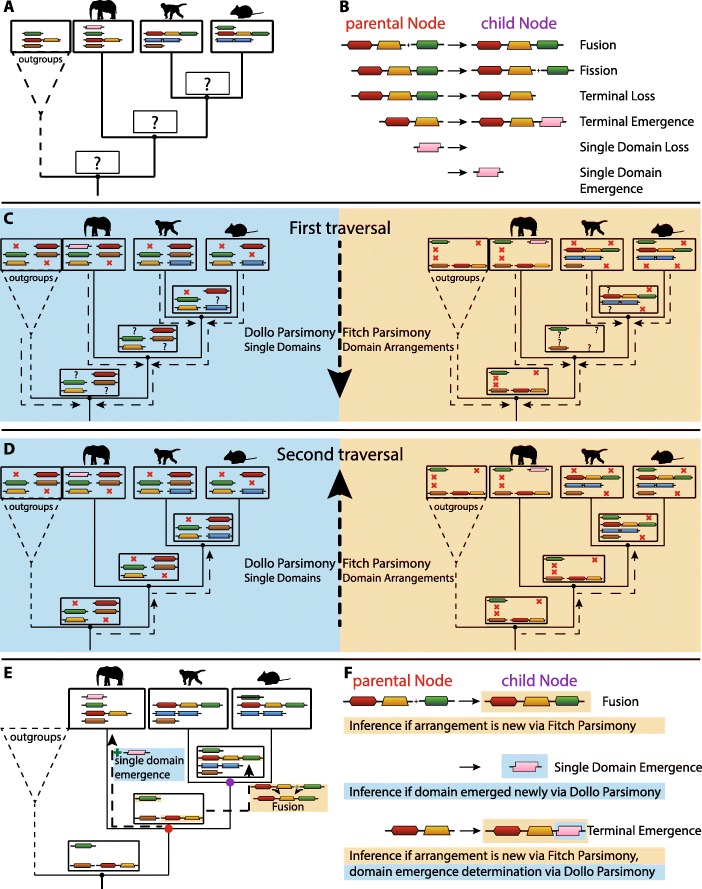Fig. 3.
Reconstruction of ancestral domain content and rearrangement events. Given a known phylogeny and domain annotations of all included species (a), it becomes possible to infer six event types leading to new domain contents over time (b). First, the ancestral domain content of all inner nodes is inferred by two different parsimony approaches: for all single domains using a Dollo parsimony approach (light blue background), and for all arrangements, using a Fitch parsimony approach (light orange background). In a first traversal from the leaves to the root of the tree, all inner node states are annotated as present, absent or unknown according to the regarding parsimony rules (c) (see Additional file 1). In a second traversal from the root to the leaves, the unknown states at the root are first resolved according to the parsimony rules (see Additional file 1) and subsequently all following unknown states set to the parental state (d). In the reconstructed tree it becomes possible to infer the different event types at any node by comparison with the parental node (e). In this way emergences/losses of domains are inferred from the Dollo tree, while arrangements are inferred from the Fitch tree (f)

